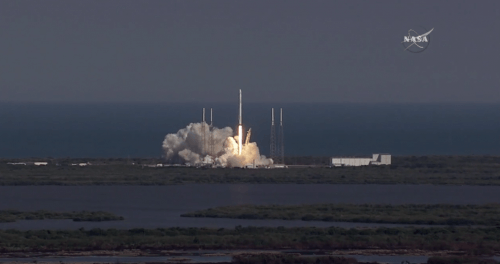Landing the launcher safely on an unmanned ship at sea was the secondary goal, but it is an important goal on the way to realizing the vision of restoring launchers and returning them to launch

SpaceX's Falcon 9 launcher, carrying a Dragon cargo spacecraft, took off on April 8 from the Cape Canaveral Air Force Station for the company's eighth mission to the International Space Station. At the end of the launch, after the first stage provided momentum for the following stages and the payload spacecraft itself, it landed, for the first time successfully, on a rig in the Pacific Ocean. As I recall, all previous attempts ended with the first stage crashing on the rig. The only time the landing was successful was when it was done on land, near the launch site at Cape Canaveral.
The Dragon contained payloads, scientific equipment, spare parts and food for the International Space Station, including an experimental inflatable living cabin of the Bigelow Company, which is trying to develop hotels in space.
The purpose of the operation was to apply the lessons learned from the painful failure of SpaceX in the previous flight in which, in June 2015, the rocket and the spacecraft on it crashed following a malfunction in the second launcher about two minutes after launch.
Landing the launcher safely on an unmanned ship at sea was the secondary goal, but it is an important goal on the way to realizing the vision of restoring launchers and returning them to launch, which is at the core of Elon Musk's dream to cut the costs of access to space, and perhaps one day to establish a "city on Mars."
The Dragon spacecraft launched about 3,300 kg of cargo, including the Bigelow Expandable Activity Module (BEAM) inflatable living space. BEAM weighing 1,413 kg will be used for the living needs of the astronauts in microgravity. BEAM will inflate into a cylinder 4 meters long and 3.2 meters in diameter after installation.
Friday's launch was the first successful Dragon mission since the crash of the previous spacecraft in June.
This is the company's eighth flight, bringing supplies, scientific experiments and technological imaging systems to its station for Expeditions 47 and 48 to support dozens of the approximately 250 scientific experiments and studies currently underway.
Among the other experiments that will arrive at the space station is equipment for the Veggie-3 experiment in which the astronauts will grow Chinese lettuce.
